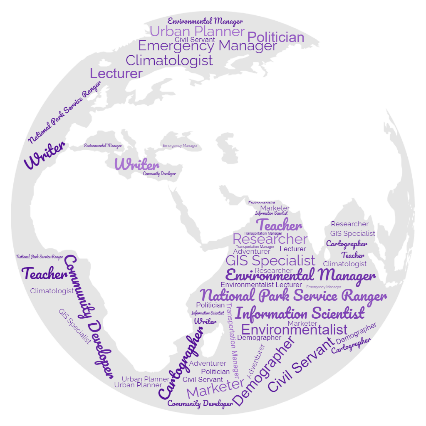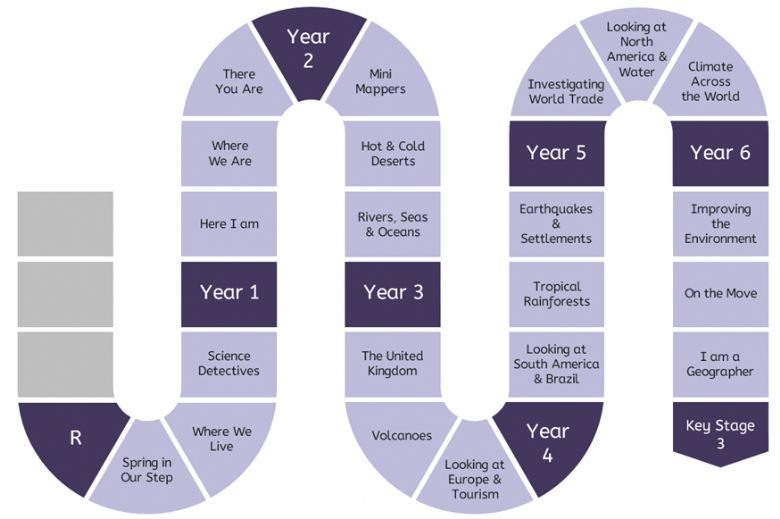Geography
Intent
Our curriculum aims to provide a broad and balanced geography education that enables pupils to develop a deep understanding of the world in which they live. It seeks to inspire pupils’ curiosity about the diverse landscapes, cultures, and environments that shape our planet but also build a keen self-awareness of their immediate surroundings and their locality. With such a culturally diverse community in and around Longthorpe, we want our pupils to see themselves reflected in our curriculum; as residents of Longthorpe but also citizens of the world. Our curriculum therefore presents a balanced view of the countries of the world, to address and pre-empt misconceptions and negative stereotypes.
Our curriculum has been designed to allow knowledge to be revisited in a structured way, as each unit and year progresses. Moreover, our curriculum is thoughtfully designed to establish a close connection with the natural sciences. We believe that geography and science are intricately linked, and through our curriculum, pupils will explore the interplay between geographical factors and natural processes, ecosystems, and the environment.
At Longthorpe Primary School, we believe our geography curriculum will have had the intended impact on our pupils if it encourages a lifelong fascination with geography, and fosters well-rounded individuals who are not only aware of the world around them but also ready to engage with the pressing global challenges of our time.
Our curriculum has also been designed to ensure that core disciplinary knowledge is explicitly taught, and gives pupils the ability to approach challenging, geographically-valid questions. This disciplinary knowledge or ‘Working as Geographers’ elements of the geography curriculum have been mapped out throughout each year group to ensure pupils have many opportunities to apply their geography skills. We achieve this by:
- Sequencing Working as Geographers elements so that they are explicitly taught and practised alongside substantive knowledge, and regularly reviewed and built upon across the years and key stages.
- Making deliberate and explicit links to other curriculum areas – particularly science – to ensure there is a consistent approach to teaching content.
- Ensuring that the development of map skills have been deliberately planned into each unit.
- Planning practical tasks that have a clear purpose: to demonstrate or prove substantive concepts, or to allow pupils to deliberately practice working skills in a relevant context.
- Undertaking fieldwork, outside the classroom to ensure that pupils are given purposeful opportunities to experience geography in the ‘real world’.
IMPLEMENTATION
To ensure the successful implementation of our geography curriculum, we know that we must make geography learning ‘sticky’ and ensure that it comes alive in our lessons. To accomplish this, we blend a variety of teaching and learning strategies:
- Active Learning: Lessons encourage active engagement, where pupils participate in hands-on activities as much as possible.
- Interdisciplinary Learning: We encourage pupils to recognise the natural links between geography and science. Lessons demonstrate how geography influences ecosystems, climate, and natural processes, creating an interdisciplinary perspective.
- Visual Aids and Technology: Lessons include the use of digital resources to make abstract concepts more tangible. For example, the use of technology to explore ‘virtual field trips’ and satellite imagery.
- Group Work and Discussions: We promote group work, discussions, and debates to encourage critical thinking and expose pupils to diverse perspectives.
- Fieldwork: Practical tasks include field trips and local excursions. Pupils can observe their surroundings, analyse landscapes, and gather data to deepen their connection to our local geography.
- Geographical Investigations: As part of relevant topics, we encourage pupils to take an investigative approach to their learning, such as climate change, migration, or natural disasters.
- Geographical Case Studies: Learning is explored through a range of case studies on different regions or countries, allowing pupils to explore cultural, social, and environmental aspects, and compare their findings.
- Mapping Exercises: Practical tasks include mapping exercises where pupils can explore maps and atlases to locate a range of geographical features.
- Explicit Vocabulary: This is taught to pupils at the beginning of lessons and referred to throughout lessons and units to ensure that pupils use and learn accurate geographical terms.
Geography Roadmap

KEY DOCUMENTS
Entire Geography Curriculum - PDF Version

To find out more about our curriculum please contact the school office.
